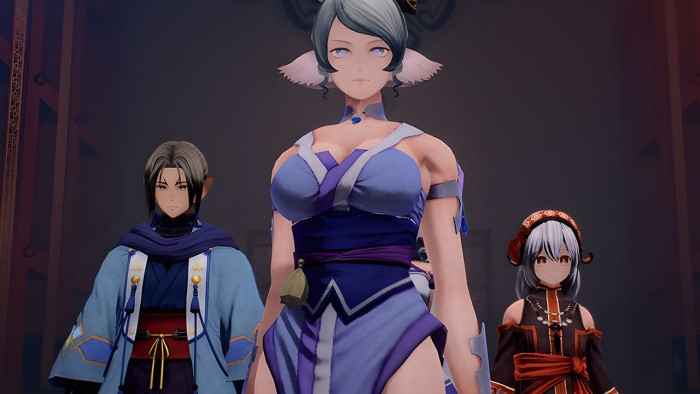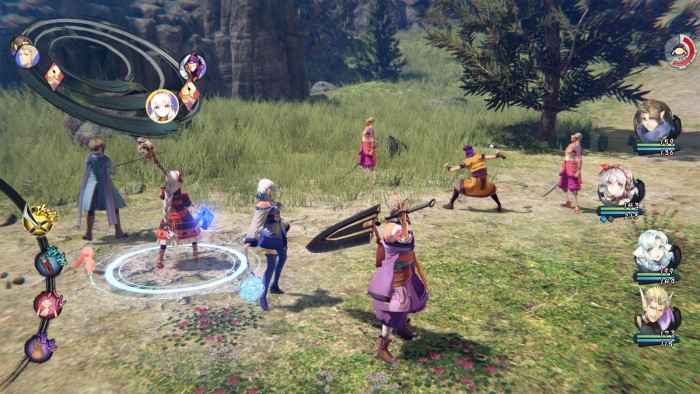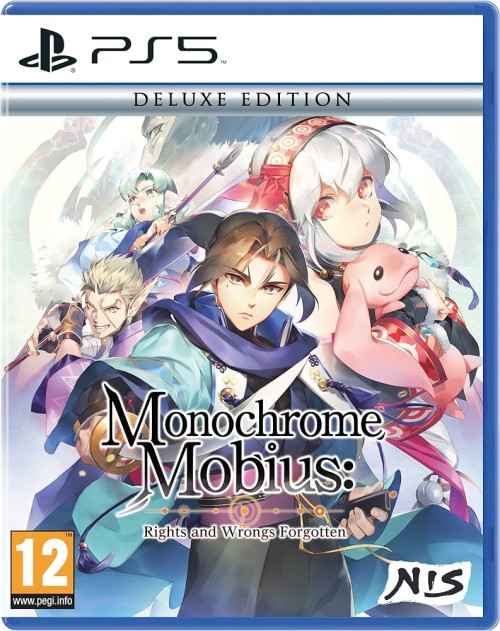Monochrome Mobius: Rights and Wrongs Forgotten Review
Monochrome Mobius: Rights and Wrongs Forgotten is a turn-based JRPG, set in the world of Utawarerumono. The Utawarerumono games are normally a blend of strategy JRPG and visual novel gameplay. I’ve heard of Utawarerumono, but haven’t beaten any of the games. The narrative of Monochrome Mobius definitely stands on its own, but I can’t say how many connections it has to other games in the franchise. Considering Monochrome Mobius is the first game of its style in the series, it’s surprising that the developers nailed the combat, but not much else.
One of the most important elements of the JRPG genre is the story, and fortunately, Monochrome Mobius: Rights and Wrongs Forgotten has a pretty driving plot. The game begins with a warrior defending a girl, and sending her through a portal to somewhere else. The game switches perspective to Oshtor, a heroic young guy, investigating troubles surrounding his village. It turns out that a creature stealing vegetables is the girl from the intro sequence. And the warrior who sent her through the portal is Oshtor’s assumed deceased father. The girl says she’s from a place nobody’s ever heard of. And because of her connection to Oshtor’s father, they adventure off together to find the place she’s from, and see if Oshtor can reunite his father with the rest of his family.
Great Plot, Poor Execution
While I really enjoyed this plot, the other story elements are pretty weak. The game’s cutscenes are too slow-paced, and transitions seem to take a second or two longer than they should. They’re sometimes framed in a way that the viewer can’t tell which character is talking. This was likely a stylistic choice to hide missing facial animations, but it was quite jarring, and a poor solution to budgetary constraints. All the voice acting is in Japanese, and the text dialogue is also quite stiff and bland. Most NPC dialogue offers no information or character nuance. All of these issues come together to remove any heartfelt moments, or genuine humor, from Monochrome Mobius’ story. It’s a narrative with lots of cool ideas, but not a lot of feeling.

In a lot of ways, Monochrome Mobius: Rights and Wrongs Forgotten is a boilerplate JRPG. It has all the expected traditional genre tropes, such as character-specific skills, items, equipment that changes stats, map exploration, and towns to talk to NPCs in. But the turn-based combat system is pretty unique, and where the game shines brightest. It’s based around an action ring, where the party members and enemies are displayed on a circular track. The higher a character’s speed stat, the faster they travel around the action ring. Attacking an enemy knocks them back on the track, which allows for combat strategy in trying to prevent enemies from taking turns. This system is very reminiscent of the combat in the Grandia games.
Grandia-style Combat
There are three action rings, and the player wants to be closest to the center ring, because the time it takes to move around the ring, and get another turn, is greatly reduced. Characters can move up a ring in two different ways. Each character has a Zeal meter that fills up by taking damage. When a Zeal meter fills, that character can use an Overzeal command. The Ascend command moves that character up a ring. If a character knocks an enemy down a ring, they also move up a ring. To move an enemy down a ring, a character has to attack an enemy that’s been staggered, which is a temporary random affliction caused by being attacked.
Sometimes gems appear on the action rings. If party members reach them first, they are granted increased Zeal, MP restoration, or restored stagger resistance, depending on the gem. If an enemy reaches the gem first, it disappears. After combat, bonus points are given and can be allocated for different stat increases.

The in-game menus are really beautiful, clear, and feature illustrated icons and gorgeous character portraits. But they are fairly cumbersome to navigate. There’s no shortcuts between menus, and inventories often lack “All” options. For example, the Tools menu contains submenus for Consumables, Equipment, Materials, and Key Items. Then under Equipment, there are further submenus for Weapons, Body, Leg, and Accessories. Every one of these menus has to be clicked on, and exited individually. There’s no way to see everything all at once, and no way to press R1 or some other button to quickly switch between menus.
Needs Polish
I bring up the menus because they’re a good example of the main issue with Monochrome Mobius. There’s a lack of thought and polish throughout the whole game that needs obvious improvement. Character movement outside of battle is very jerky, and it’s difficult to precisely click on objects of interest. The area maps are uninteresting, and lack secrets, puzzles, or anything else that might diversify exploration. The camera is occasionally completely obscured by the environment. Walk between a bunch of trees, and you won’t be able to see anything. There are save points, but the player can save the game any time in the menu. Most items are useless. Most side quests are the most basic kind of fetch quest. I found no glitches in Monochrome Mobius, but there were too many elements that felt phoned in.

The visuals in Monochrome Mobius are not great. The 3D models are okay, but the model animations would’ve looked poor on the PS3. Environments look empty. Character animations are repetitive. And all the cutscenes do their best to avoid having non-combat animations, and it’s very obvious. There is a gorgeous opening anime cutscene, structured like the intro to an anime series. But I would also argue that the game’s entire aesthetic has a very generic anime design, that does little to stand out amongst the most generic anime-inspired game visuals. The music is excellent throughout the game though. It’s well-orchestrated, and uses some unique instruments to drive melodies. The JRPG adventure vibes are cozy and whimsical.
In Conclusion
Monochrome Mobius: Rights and Wrongs Forgotten is a below-average JRPG in almost every category. But, it has a fantastic Grandia-inspired action ring combat system that fans of turn-based JRPGs should experience. The story is good, despite its poor presentation. I would recommend Monochrome Mobius to fans of turn-based JRPGs, who are starved for more games in the genre. But there are a lot of excellent JRPGs getting released right now, and the combat won’t be enough for casual fans to prioritize it over other genre offerings.
***PS5 code provided by the publisher***
The Good
- Grandia-inspired combat
- Interesting narrative
- Lovely score
The Bad
- Lacks polish
- Poorly directed dialogue sequences
- Generic anime aesthetics

